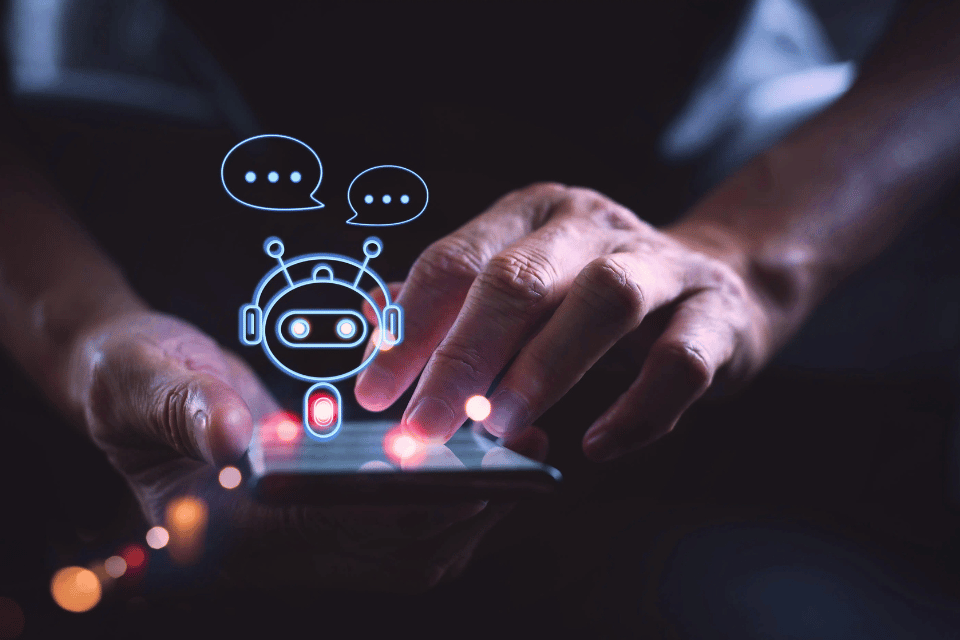LLMs: The Driving Force Behind Next-Gen AI Chatbots

Large Language Models (LLMs) have been at the forefront of advancements in artificial intelligence, fundamentally changing the way AI chatbots interact with users. These models are transforming the digital experience, making conversations with AI smoother, more natural, and much more responsive.
But what exactly is an LLM, and how are these models shaping the future of AI chatbots?
What is an LLM?
- At its core, a Large Language Model (LLM) is a type of artificial intelligence designed to process and generate human language.
- Built using vast datasets, LLMs learn linguistic patterns and context, allowing them to predict and generate text with surprising accuracy.
Some well-known LLMs include OpenAI's GPT-4 and Google's BERT, both of which are capable of handling complex tasks like text generation, translation, and even coding.
What makes LLMs stand out? It’s their ability to perform these tasks without being explicitly programmed for each one. They use machine learning to "understand" language in a way that mimics human comprehension.
How LLMs Are Revolutionizing AI Chatbots
LLMs have taken AI chatbots to the next level by making interactions feel more fluid and natural. Initially, chatbots were limited to pre-programmed responses, often leading to rigid, repetitive conversations. With the integration of LLMs, chatbots can now engage users in meaningful conversations, adapting to context and providing more human-like responses.
LLMs are making a difference, how?:
Context Awareness:
- One of the biggest improvements LLMs bring is their ability to retain context. In a conversation, they can remember what was previously said, which allows them to generate responses that are coherent over multiple exchanges.
- This leads to more engaging interactions, as users no longer need to repeat themselves or deal with disjointed responses.
Natural Language Generation:
- LLMs enable chatbots to craft responses that sound more conversational. Instead of replying with robotic answers, LLM-powered chatbots can respond in ways that feel natural, with variation and nuance.
- This results in conversations that are not only informative but also pleasant and engaging for the user.
Adaptability Across Tasks:
- LLMs are incredibly versatile. They can perform a range of functions beyond basic Q&A. Be it drafting emails, generating reports, or helping with customer service, LLM-powered chatbots are capable of handling a wide array of tasks.
- This adaptability is especially valuable in customer-facing roles where AI needs to manage multiple types of requests efficiently.
The Technology Behind LLMs
- LLMs are built on transformer architecture, a type of neural network designed to handle sequential data, like language.
- Transformers work by paying attention to relationships between different parts of a sentence or document rather than just processing the text from start to finish.
- This allows LLMs to understand context more deeply and generate responses that are contextually appropriate.
A crucial advantage of LLMs is their ability to learn from unsupervised data. Unlike traditional models that rely on labeled datasets, LLMs are trained using vast amounts of unstructured text from sources like books, websites, and social media allowing them to learn a wide range of linguistic patterns, making them highly effective at generating human-like responses.
Real-World Applications of LLM-Powered Chatbots
The integration of LLMs into chatbots is already having a tangible impact across various industries. These advancements in action are because of:
Customer Service:
- LLM-powered chatbots are transforming customer service by handling more complex queries, reducing the need for human intervention.
- These chatbots can provide detailed responses and solve issues quickly, offering a seamless user experience while cutting operational costs for businesses.
E-Commerce:
- In the world of online shopping, LLMs are helping users find products, navigate through catalogs, and make informed purchasing decisions.
- These chatbots can even offer personalized recommendations based on user preferences, improving the overall shopping experience.
Healthcare:
- LLM-based chatbots are being used in healthcare to assist with appointment scheduling, symptom checking, and even providing medical advice in certain cases.
- They act as a bridge between patients and healthcare providers, reducing wait times and improving patient engagement.
Finance:
- In the financial sector, LLMs are being used for tasks like fraud detection, customer inquiries, and even financial planning.
- Their ability to understand and process complex financial language makes them invaluable in providing accurate and timely assistance to users.
Challenges and Considerations
- While LLMs offer significant advantages, they also come with challenges. One of the biggest hurdles is their computational cost. Training and running these models requires a substantial amount of computational power, memory, and data. This makes them expensive to deploy and maintain, particularly for smaller organizations.
- Another major concern is bias. Since LLMs are trained on massive datasets sourced from the internet, they can sometimes pick up and reproduce biases present in the data. This can lead to inappropriate or skewed responses, making it crucial for developers to continuously monitor and fine-tune these models.
The Future of LLMs and AI Chatbots
LLMs are not just advancing the capabilities of AI chatbots—they’re revolutionizing the entire digital experience. By making interactions more natural, contextual, and adaptable, they’re setting a new standard for how businesses engage with their users.
- The next wave of innovation might involve multi-modal chatbots—AI that can process not just text but also images, voice, and even video.
- This would open up new avenues for interaction, particularly in fields like customer service and e-commerce, where multi-channel communication is key.
- As concerns around AI safety and fairness continue to grow, we can expect LLMs to evolve with stricter ethical guidelines.
- With improvements in transparency and governance, LLMs could become the backbone of trustworthy and transparent AI systems, enhancing user experiences across the board.
Read our latest blogs for a deeper understanding of these cutting-edge topics.




